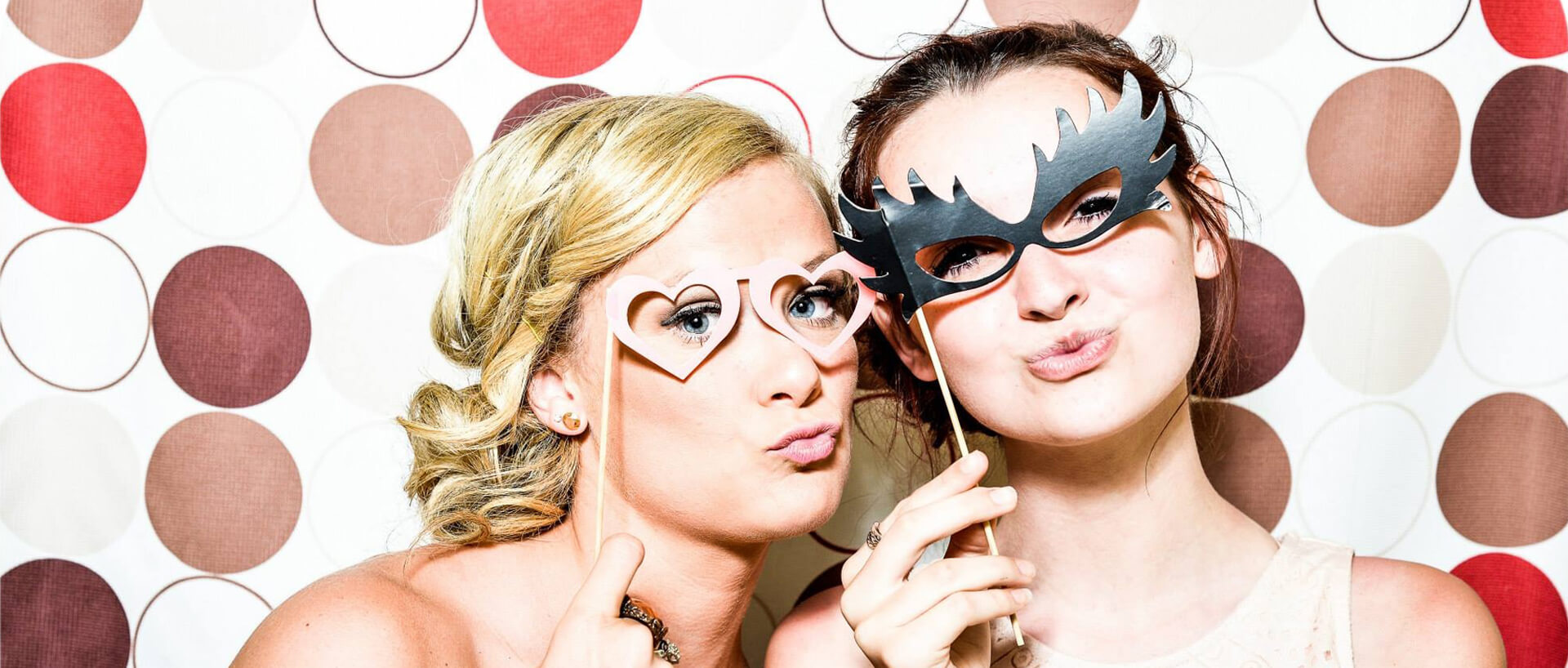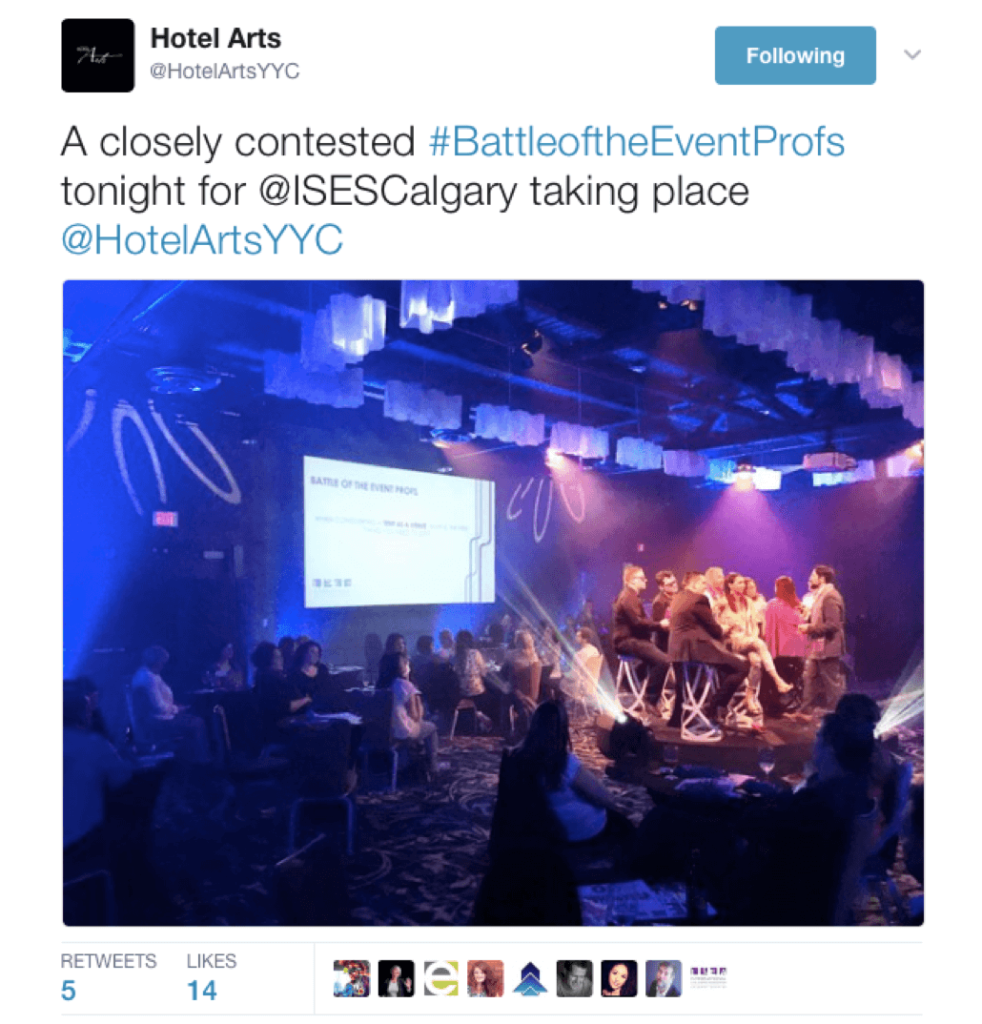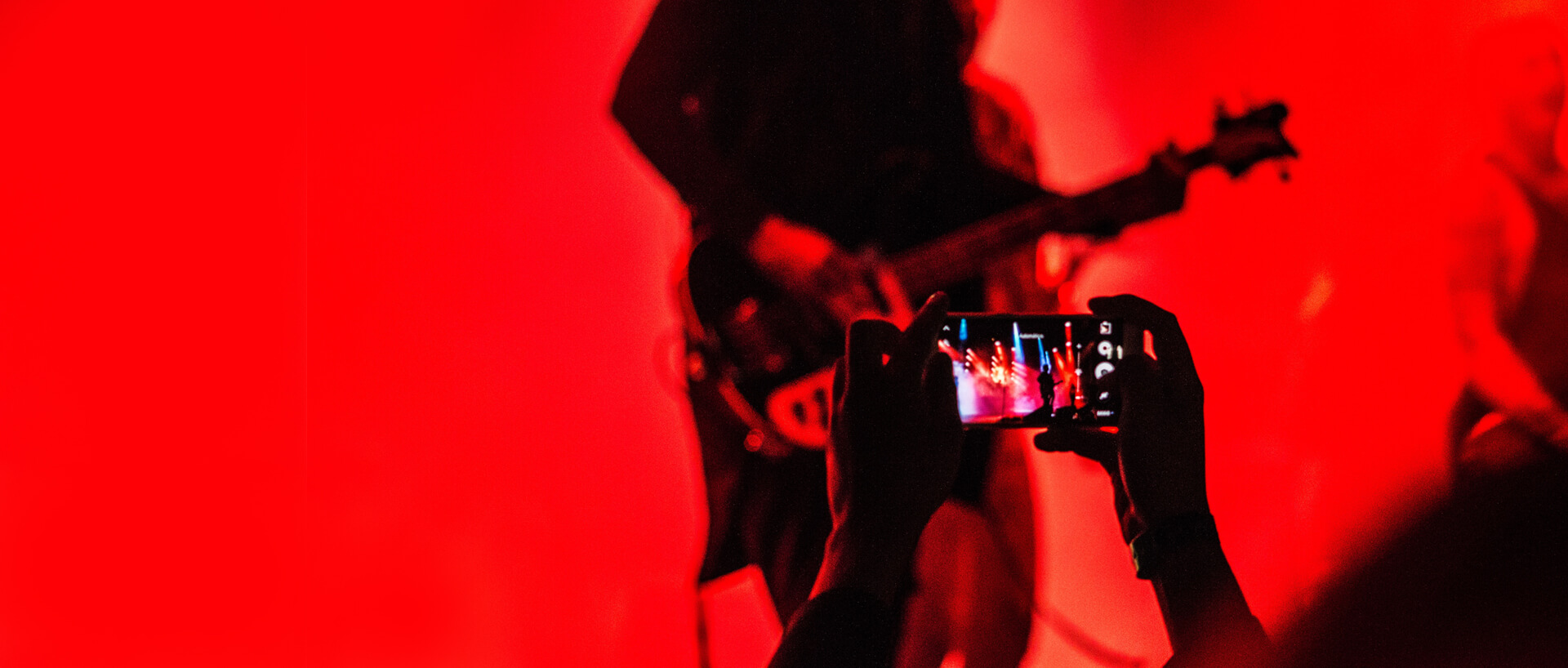Photo by Sergio Alejandro Ortiz on Unsplash
Get the Most from Corporate Events using Social Media
As a professional event planner for over 10 years, I’ve had a lot of opportunity to see the rise of social media, and specifically its effects on the world of events. Attendees shoot images, share comments and connect with each other faster than ever, and this creates an opportunity that can be harnessed to an event’s benefit. So, how does one effectively market events using social media? Before you start, keep in mind that you should create social media guidelines (for appropriate content, tone, and response policies) to consistently reflect your brand, but assuming you’ve done this, let’s move on to how it can be used in event marketing.
A successful social media campaign can be used in conjunction with corporate events like conferences, grand openings and fundraisers to connect participants before, during and after the event. Social media engagement beforehand generates buzz and excitement helping to sell tickets. During the event, it can engage participants in real time, promoting a feeling of connectedness. Afterward, it confirms time and money was well spent by those attending the event, solidifying their commitment to return next time, and sharing the positive messaging with those who were unable to attend.
When you create your social media strategy, choose the platforms on which you are active. Event professionals primarily use Facebook, Twitter and Instagram. (Note: LinkedIn is also a great media for connecting professionally, but since it is not used as much for sharing content, it doesn’t have the same magnification effect in an event setting. But do post your event information to all platforms you use.) Regardless of the platform, you need to have conversations with significant engagement; after all, this is the dual purpose of both social media and events: to engage others!
Use hashtags to help promote your event.
(For more advice on how to use hashtags effectively, check out our previous blog). The hashtag function was created on Twitter to allow people to easily follow topics of interest. Clicking or tapping a tagged word in any message allows you to view other tweets that use the same hashtag. Twitter recommends no more than two hashtags per post. Invent a Twitter hashtag you will use for your specific event, and check to be sure the words you choose have not been used for other unrelated purposes.
Signage (paper or digital) should be evident everywhere to encourage hashtag use.
One good tactic to accomplish this is to offer a prize associated with the most active user, such as a free conference for the winner next year. Pop-up banners or photo backdrops with large images and tiny references to hashtags generate a visual easily incorporated into photos. If enough attendees use your hashtag, you might “trend” on Twitter in the “Trending Now” feature, which means Twitter lists your event as a top topic of interest, attracting even more followers! This is a real win for an event planner.
Many event registration tools will have social media incorporated into their landing pages so it is easy to search out chatter on twitter about a specific event by using the correct hashtag or handle. What’s more, really large conferences (and some smaller ones too) often have live-feed twitter walls. One effective social media wall is provided by The Wallrus; it is the best Twitter/Instagram wall I’ve seen, and it’s free!

Like many social media platforms, Twitter also supports two types of video – pre-recorded and live.
With a time limit of 140 seconds, pre-recorded videos are ideal for answering attendee questions, sharing updates live in the field, or posting professionally crafted promos. The key is to be short and snappy, just like with regular tweets.
In 2015, Twitter acquired the live streaming app Periscope. Live streaming on Twitter allows for longer broadcasts with the additional advantage of real-time commenting, liking and sharing. Thanks to the launch of Periscope Producer in October 2016, and the Producer API in March 2017, creators are now able stream to Twitter from professional devices, such as cameras and Virtural Reality (VR) headsets, and are no longer limited to their phone. For events, this has allowed planners to harness the exciting spontaneity of social media-based video streaming while attaining the production quality of traditional media.
You can help your event get noticed by tagging people in your post.
You might be surprised to learn that we actually see only a fraction (2% – 35% depending on the source) of our Friends’ Facebook posts in our News Feed. Facebook uses a complex News Feed algorithm to help narrow down the most relevant and engaging posts for a given user. If six people are tagged, you have a 6-times chance of your post being seen and read. Other factors such as who posted, when, interactions with the post, and the type of content also contribute to this algorithm.
The most active time on Facebook is weekdays from 1–3 PM, so in promoting your event, schedule the timing of posts to appear in this window.
When posting about your event, try posing questions to your audience. For instance, “What new food are you most excited to try at the Calgary Stampede this year?” Not only will you engage your audience directly, but you will gain valuable insight that can help improve your event. For example, has your annual event been moved to a new location this year? Solicit feedback on the change. Keep the conversation going!
Facebook Live is a new feature that can be used to live stream, or live-record an event and share it with your followers.
With a generous time limit of 4 hours, the live streaming feature can create a great deal of excitement, and help to attract a national and international audience for your live event. For example, you can take the online audience on an exclusive behind-the-scenes tour, start a spontaneous interview, or announce a giveaway. This creates opportunities to keep the party going even during breaks in performances. When using video, remember to take advantage of Facebook’s auto-captioning capabilities or upload your own captions. In addition to improving the accessibility of your video, it can be what determines whether someone decides to stop scrolling their newsfeed to watch, particularly if the user has the sound turned off.
The first time I heard about Facebook live was an ILEA Event at Hotel Arts April 12, 2016. It was called “Battle of the Event Profs” and by a simple hashtag search of #BattleoftheEventProfs I was able to find the thread of postings about it on Twitter. This screenshot is from my Twitter Feed, but the Facebook Live reach in real time was over 200 people watching the event across Canada and the States as it was unfolding.

The event was phenomenally successful, and the social media component was a big part of that. The same format of event was then offered as an educational program by the ILEA Canada President and President Elect at The Special Event (an international conference) held in California in January 2017.
On Instagram, it is necessary to use visuals with every social media post, and these can be photos or video.
Depending on your event and audience, Instagram can be an effective social media channel. Generally, Instagram has a younger audience and tends to be more lifestyle oriented, while Twitter is more serious and business-related. Twitter and Instagram can use the same hashtags, and Twitter and Instagram walls can be combined. Photos should be crisp and compelling and adhere to size standards for every social media platform. View the latest information on image sizing here.
As a visually-driven social media platform, Instagram has a number of app integrations that can help you to create memorable photos and videos. For example, with Boomerang you can create looping video clips that moves forward and backward. Brands and people can easily be tagged in posts. Thanks to these mentions, your audience can easily find related content to the brands they encounter at your event. As well, brands are quickly notified of any content related to their business.
Non-live video clips are limited to 60 seconds, but you can record multiple clips for one video within this time frame. The maximum duration of live recordings are 60 minutes and the video can only be replayed for 24 hours after the event. The “limited time” nature of Instagram isn’t necessarily a negative – live video can be a motivating factor for audiences to tune in.
If your corporate event lends itself to visuals, a contest on Instagram is an easy way to generate user-submitted content.
A popular example includes asking people to tag themselves in a photo with a specific product or brand, for a chance to win a prize. As a result, the product or brand gets to be featured in happy customer photos, that often feel more authentic than a staged photograph. Sometimes, smaller businesses or booths team up, asking visitors to follow a series of brands and comment on specific photos to enter a prize draw. Usually, while not in direct competition, these brands target a similar audience, allowing participants to potentially discover a new company that fits their interests.
Instagram Stories vs. Snapchat vs. Messenger Day
Popular social media platforms often grow to mimic the functionalities of their competitors, as a way to meet evolving user expectations. Newsfeeds, hashtags and, more recently, live video are now ubiquitous. When Snapchat allowed users to collect their videos and photos into chronological compilations that expire after 24 hours, known as “Stories”, it didn’t take too long for other apps to adopt the format. So, now that we have Snapchat, Instagram Stories and Messenger Day, which one should you use and why?
Professionals in the industry seem to agree that Instagram Stories is better suited for businesses, due to the easy audience reach and trackable engagement from comments and likes. In comparison, Snapchat is still beloved by many for personal use and continues to be a successful marketing tool for businesses with younger audiences. Messenger Day, the latest to the party, does not seem to be turning heads the way Instagram Stories did. What’s more, Messenger Day is only used via a regular user account, not through a Facebook Page. This limits its efficacy for businesses.
One feature that Snapchat has, that Instagram Stories doesn’t, is the ability to create sponsored filters or custom geo-filters.
While sponsored filters can be quite expensive, custom geo-filters are very affordable if you have someone on staff that knows their way around Photoshop. While you need to have a snapchat account to set up a custom geo filter, your business does not have to have an active snapchat account, or any followers, to see the benefit. Simply make it available. You better believe that any Snapchat user who attends your event will be checking out the local filters and sending out updates to their friends. Geofilters easily give context to their photos, like digital scrapbooking, while also creating brand exposure. If you’re lucky, they’ll also cross-post their snaps to Facebook or Instagram.
On the other hand, Instagram Stories offers helpful tagging with location stickers.
By tagging your photos and videos with a location sticker, users can select the sticker and be shown an auto-generated slideshow of photos and videos that were similarly tagged. By making sure your social media posts are appropriately tagged, you can encourage users to continue down that content rabbit hole. It can also help users with their itinerary, by highlighting popular booths, locations or events.
Account Takeovers
If the event host has an official social media account, it can be beneficial to let a special guest take over the account for a limited time. A popular way that brands do this, is to have a dedicated “Ask Me Anything” or “AMA”. During this period, the guest can use the rapid pace of twitter, for example, to converse with attendees in real time. While account takeovers are often well-known social influencers, folks also enjoy it when different members of a business team take the spotlight. It lets attendees put a face to the company while showing them a different, but relatable, perspective.
Monitor & Reply!
Moderating and responding to questions and comments on all social media platforms in a timely fashion will reflect well on your brand. A survey by Sprout Social on Brand Behaviors on Social found that brands that are helpful, respond to questions, and join in on conversations, are rated most positively. As we mentioned earlier with Facebook, newsfeed algorithms give top billing to posts from accounts that the user engages with the most. Twitter and Instagram now use a similar method to organize their feeds. This means it’s crucial to monitor posts for any mentions or opportunities to engage directly with users.
If you want to monitor social media traffic during your event (such as the twitter wall above) somebody must be assigned to track the hashtags used, determine which twitter comments will be added to the wall, and ensure prompt feedback is given. Platforms like Hootsuite or Sprout Social can help with the process.
Conclusion
Whether before, after or during your event, there are all kinds of ways for social media to expand your event’s reach. Not to utilize them is an opportunity lost; after all, an increased social media following is an audience to which you can market year over year. Remember, people will be sharing information online about your event anyway, so learning to harness and magnify this communication media is essential in your event planning toolkit.
(Article co-authored by Tenato Strategy’s Art Director Samantha Boone. With degrees in psychology and graphic design, Samantha brings an amazingly broad skill set to the team, including exceptional graphic design, writing, and illustration talents.)


